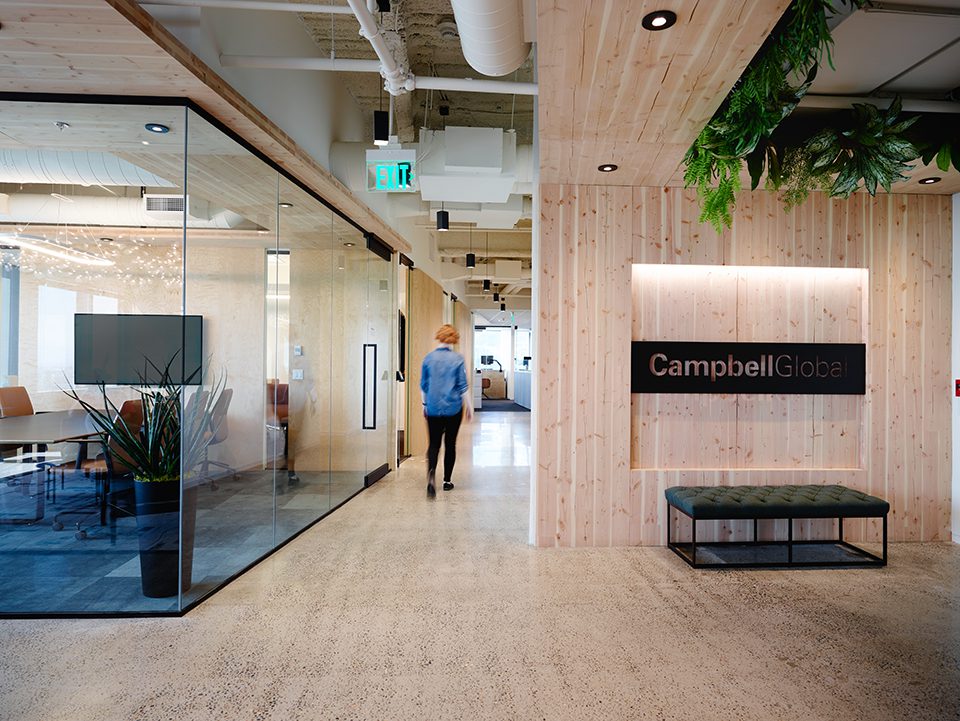Mass Timber and Sustainable Building: A Closer Look at New York City
Local Law 97 transforms allowable emissions by instituting a carbon cap; mass timber will reduce the City’s environmental impact.
In recent years, the construction industry has witnessed a significant surge in using mass timber as a sustainable and innovative building material. Swinerton’s early commitment to mass timber began in 2016 with the design, permitting, and construction of the First Tech Federal Credit Union Oregon Campus, the then-largest mass timber office building in the United States. Swinerton’s proactive approach fostered delivery time four months faster than the industry average at a rate 4% cheaper than structural steel. Mass timber provides an environmentally friendly alternative to traditional construction methods and is gaining popularity across the United States. New York City (NYC), a hub of architectural advancements, has emerged as the next focal point for mass timber construction as its sustainability goals have become the priority.
NYC’s dense urban environment and stringent building codes have traditionally favored steel and concrete structures. However, with growing concerns about climate change and a push for sustainable development, mass timber has been integrated into the City’s building code and construction landscape.
A 2022 update to the building code by the NYC Department of Buildings (DOB) now allows for cross-laminated timber (CLT) in Type IV construction in buildings up to 85 feet or seven stories high. While many buildings have harnessed mass timber construction already, many NYC developers have not utilized CLT–a material with rigorous manufacturing standards and certifications, millimeter precision and dimensional stability, inherent fire resistance, and regional sourcing opportunity.
The updated building codes and the increased use of CLT will allow the City to adhere to one of the world’s most ambitious regulations on building emissions, Local Law 97, which institutes a carbon cap on buildings larger than 25,000 square feet. A third of citywide emissions come from approximately 50,000 of these sized buildings in NYC. By 2024, the first iteration of emission limits is anticipated to impact the highest emitting 20% of these buildings, while 75% will be affected by 2030. This will represent a collective 40% reduction in citywide building emissions. NYC determines the annual emission budget for each building using historical data related to building size and use. Each year a building exceeds its budget, it will be fined per metric ton of additional emissions.
Studies show that 80% of a building’s embodied carbon (carbon emissions from manufacturing and transporting construction material and the process of construction) are attributed to building materials; however, the use of mass timber reduces the carbon emissions associated with the energy-intensive production of concrete and steel, not only by replacing the structure type but also in decreasing the foundation systems from the reduced building weight. Timber captures and stores carbon dioxide rather than omitting it and is lighter than traditional materials such as steel and concrete, making construction processes more efficient and reducing transportation costs. According to Woodworks, since 2014, the number of projects incorporating mass timber has doubled every two years, and this trend is expected to continue for the next 15 years.
In 2021, Swinerton Incorporated launched Timberlab to meet the needs of a growing mass timber industry. Timberlab offers an expanded scope of services, including strategic procurement, licensed timber engineering, custom fabrication, and on-site installation. Today, Swinerton and Timberlab are known for successfully building some of the country’s most innovative mass timber projects. Timberlab has two fabrication facilities in Portland, OR, and Greenville, SC.
The increasing use of mass timber construction in NYC signifies a paradigm shift towards sustainable and innovative building practices. With supportive regulatory changes and a focus on environmental consciousness, mass timber will become a prominent feature in the City’s architectural landscape. As NYC continues to lead the way in urban development, mass timber offers a compelling solution for creating sustainable buildings that will shape the future of New York City’s skyline. “Swinerton has not only incorporated mass timber into new construction but also into tenant buildouts and renovations. The material is well-suited for everything from office and residential to public buildings,” says Andrew Pearl, Vice President and Division Manager of Swinerton’s New York location.



